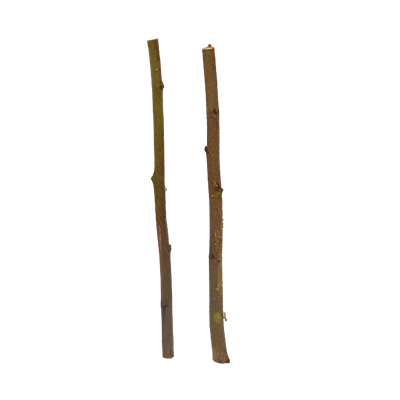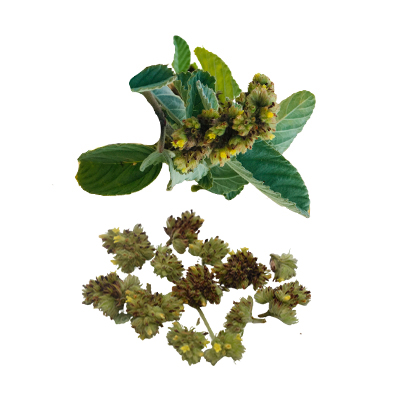Sleepy morning
Waltheria indica L.
Malvaceae
Location in our garden
Principal



Synonym
Melochia corchorifolia Wall.
Waltheria africana Schumach. & Thonn.
Waltheria americana L.
Habitus
Herbaceous. An erect, hairy, shrubby or half woody perennial herbaceous plant, up to 1.5 m high
Part Used
The Whole Plant
Growing Requirements
Full Sunshine
Need Shade
Habitat
Terrestrial
Overview
Sleepy morning is traditionally used in several countries (commonly in Africa, South America and Hawaii) against inflammatory related diseases and cancer, mainly as a decoction of the aerial parts. It is harvested from the wild, not only for local medicinal use, but also as the source of a fibre.
Vernacular Names
He ta cao (Chinese), Uhaloa (Hawaiian), Basora prieta (Spanish), Barulad (Tagalog-Philippines), Taan saai, Yaa hua nok khao (Thai), Hoàng tiên (Vietnamese).
Agroecology
Sleepy morning is widely spread through the tropics and subtropics. It is an ubiquitous weed and early coloniser in disturbed ground, tolerant of a wide spectrum of habitats and altitudes, from coastal plains, open scrub, roadsides and weedy fields to steep rocky slopes, from sea- level to 125 m altitude in Java.
Morphology
- Roots - deep and strong (tap-rooted herb).
- Stems - cylindrical and full. It is quickly becoming woody at the base. It is hairy, covered with long simple hairs.
- Leaves - oblong-ovate or oblong, 3.5 to 9 cm long, rounded or blunt at the tip, slightly heart-shaped at the base, with toothed margins.
- Flowers - bisexual, yellow, sweet-scented, about 5 mm long, borne in dense, shortly peduncled fascicles at the axils of the leaves.
- Fruits - a dehiscent capsule, almost globular, 2-valved. It measures 4 mm in diameter and remains in the chalice. It contains only a single seed.
- Seeds - black, oblong, 2.5 mm long and 1.5 mm wide. The tegument is finely granular.
Cultivation
Propagated by seed. Collect the tiny capsules when they are mature, but before they have turned completely brown.
Chemical Constituents
Cyclopeptid alkaloids, flavonoids, caffeic acid, mucilage, tannins, glycosides, sterols, terpenes, saponins and anthraquinones.
Traditional Medicinal Uses
- The plant is astringent, emollient, febrifuge, anti-inflammatory, antifungal, antisyphilitic, aphrodisiac, abortifacient. Root considered purgative.
- Studies have suggested anti-pneumococcal, antioxidant, antimicrobial, anti-plasmodial, anti-trypanosomal, anti-ulcer, wound healing, anti-cataract, cytotoxic,analgesic, chemopreventive properties.
- Decoction of the plant is given to infants to drink or to sniff and inhale, at teething or at birth.
- In Togo and Yoruba, infusion is given as drink and wash, to strengthen a child's resistance against fevers.
- In South Africa, root used as remedy for sterility and as astringent for internal hemorrhages.
- In the Philippines, it is used as febrifuge and as antisyphilitic.
- Among the Hausas, used as purgative; decoction used as syphilis prevention or immunity.
- In West Africa, decoction of roots and leaves is used for washing wounds. In the Ivory Coast, decoction of roots is used as aphrodisiac.
- In Burkina Faso, roots and aerial parts are used for treatment of malaria. Used in African folklore medicine for treatment of pain, fever, rheumatism. In India, decoction of dry leaf powder is used for cough.
- Used in African folklore medicine for treatment of pain, fever, rheumatism.
- In India, decoction of dry leaf powder is used for cough


